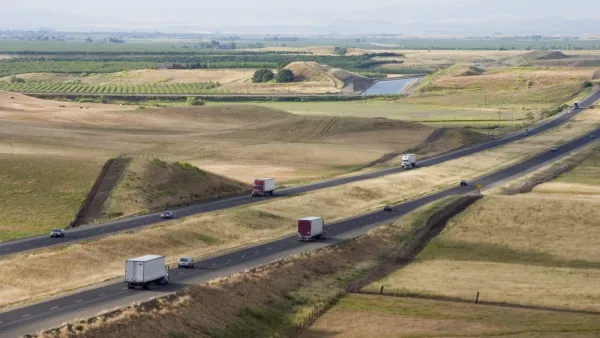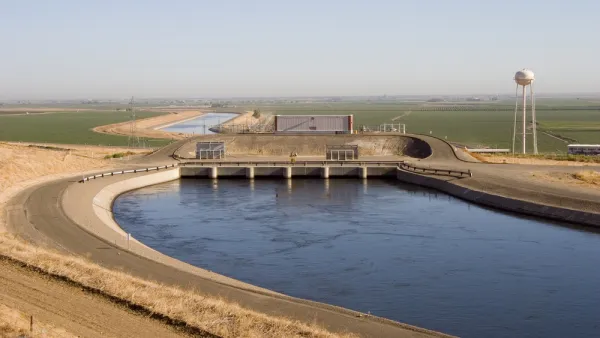This piece from Scientific American looks at the jurisdictional challenge of conserving water in the cross-state Ogallala Aquifer, one of the world's largest sources of freshwater and the backbone of the nation's farm economy.
"The Ogallala Aquifer, the vast underground reservoir that gives life to these fields, is disappearing. In some places, the groundwater is already gone. This is the breadbasket of America-the region that supplies at least one fifth of the total annual U.S. agricultural harvest. If the aquifer goes dry, more than $20 billion worth of food and fiber will vanish from the world's markets. And scientists say it will take natural processes 6,000 years to refill the reservoir.
The challenge of the Ogallala is how to manage human demands on the layer of water that sprawls underneath parts of eight states from South Dakota to Texas. As landowners strive to conserve what's left, they face a tug-of-war between economic growth and declining natural resources. What is happening here-the problems and solutions-is a bellwether for the rest of the planet."
"...By 1980 water levels had dropped by an average of nearly 10 feet throughout the region. In the central and southern parts of the High Plains some declines exceeded 100 feet. Concerned public officials turned to the U.S. Geological Survey, which has studied the aquifer since the early 1900s. With their state and local counterparts, USGS officials began monitoring more than 7,000 wells to assess the annual water-level changes.
What they found was alarming: yearly groundwater withdrawals quintupled between 1949 and 1974. In some places farmers were withdrawing four to six feet a year, while nature was putting back half an inch."
Thanks to Waterwired
FULL STORY: The Ogallala Aquifer: Saving a Vital U.S. Water Source

Analysis: Cybertruck Fatality Rate Far Exceeds That of Ford Pinto
The Tesla Cybertruck was recalled seven times last year.

National Parks Layoffs Will Cause Communities to Lose Billions
Thousands of essential park workers were laid off this week, just before the busy spring break season.

Retro-silient?: America’s First “Eco-burb,” The Woodlands Turns 50
A master-planned community north of Houston offers lessons on green infrastructure and resilient design, but falls short of its founder’s lofty affordability and walkability goals.

Test News Post 1
This is a summary

Analysis: Cybertruck Fatality Rate Far Exceeds That of Ford Pinto
The Tesla Cybertruck was recalled seven times last year.

Test News Headline 46
Test for the image on the front page.
Urban Design for Planners 1: Software Tools
This six-course series explores essential urban design concepts using open source software and equips planners with the tools they need to participate fully in the urban design process.
Planning for Universal Design
Learn the tools for implementing Universal Design in planning regulations.
EMC Planning Group, Inc.
Planetizen
Planetizen
Mpact (formerly Rail~Volution)
Great Falls Development Authority, Inc.
HUDs Office of Policy Development and Research
NYU Wagner Graduate School of Public Service



























